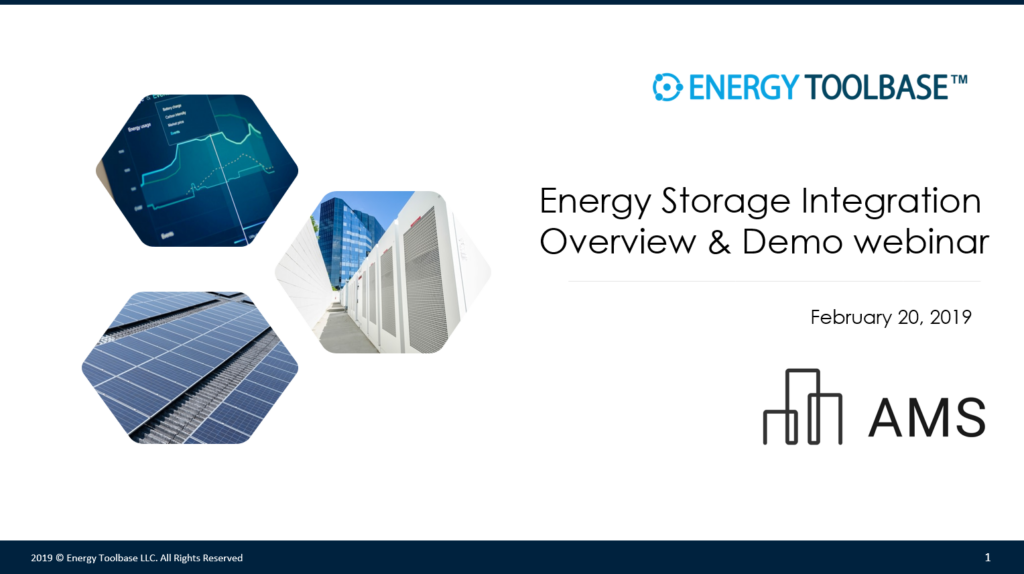WEBINAR: Hawaii’s Solar + Storage Market

Summary: Hawaii has set one of the most ambitious statewide renewable energy goals in the country, targeting to reach 100% renewable energy by 2045. Some Hawaiian islands are predicting that they may even reach that goal before 2045, which makes Hawaii a front runner in the solar market, but the market has gone through many […]
Where are we now? The status of Hawaii’s solar + storage market

Hawaii is one of many states that have set a sizable renewable energy goal, with hopes of reaching 100% renewable by 2045. This goal is not out of reach by any means, in fact, some islands are predicting that they may even reach that goal before 2045. Another big milestone …
We Updated our SGIP Incentives

We made a small update to the logic we use to calculate (SGIP) Self Generation Incentive Program energy storage incentives that we want to make users aware of. The SGIP Program Handbook states that the energy capacity of a storage system, which the SGIP incentive is paid based on, is …
A Historic Moment for Residential Energy Storage Economics: California’s new Time-of-Use Rates

A historic thing happened earlier this month for residential energy storage economics. For the first time ever, the project economics of a solar + storage project operated in time-of-use (TOU) arbitrage mode, beat the economics of a standalone solar PV project. This noteworthy occurrence happened in the Southern California Edison …
WEBINAR: Energy Toolbase And Stem Integration

Summary: Energy Toolbase now includes Stem, Inc., the world leader in Artificial Intelligence (AI)-driven energy storage services. The addition to the ETB platform gives project developers the opportunity to design and deploy solar + storage solutions based on Stem’s industry-leading energy storage controls. With this integration, distributed energy providers can simulate project performance, analyze financial […]
Energy Toolbase + Stem Integration: What You Should Know

When it comes to energy storage modeling, Energy Toolbase has consistently made improvements to our platform that allows our users to accurately model, propose and optimize the economics of any behind-the-meter storage project. Our latest integration with Stem , the world leader in AI-driven energy storage services gives project developers …
Energy Toolbase Integrates Stem’s Industry-Leading AI Storage Platform and Experience

Energy Toolbase now includes Stem, Inc. , the world leader in Artificial Intelligence (AI)-driven energy storage services. This addition gives project developers who use Energy Toolbase the opportunity to design and deploy solar + storage solutions based on Stem’s industry-leading energy storage controls. With this integration, distributed energy providers can …
WEBINAR: Energy Toolbase & AMS Integration

Summary: We have added AMS to our offerings within the platform to provide a unique solution for developers to design and deploy distributed energy resources with Energy Toolbase’s software-as-a-service for design, and AMS’s AI platform for operations This addition enables distributed energy developers to run energy storage simulations and financial analyses on Energy Toolbase, based […]
AMS + Energy Toolbase Integration: Here’s what you should know

Our storage modeling capabilities just got even more intuitive as we are now integrated with AMS. This integration with AMS energy market software allows developers to simulate the project economics of a solar and storage system optimized with AMS’s validated savings and financial performance guarantee. We’ve created a simplistic workflow where developers can have the confidence to model energy storage where the output is tested, validated and guaranteed from AMS, the company controlling the asset in the field.
Energy Toolbase Chooses AMS to Implement AI-Driven Energy Storage Platform

Energy Toolbase adds AMS to its offering, providing a unique solution for developers to design and deploy distributed energy resources with Energy Toolbase’s software-as-a-service for design, and AMS’s AI platform for operations. This effort enables distributed energy developers to run energy storage simulations and financial analyses on Energy Toolbase, based on the use of AMS’s energy market software